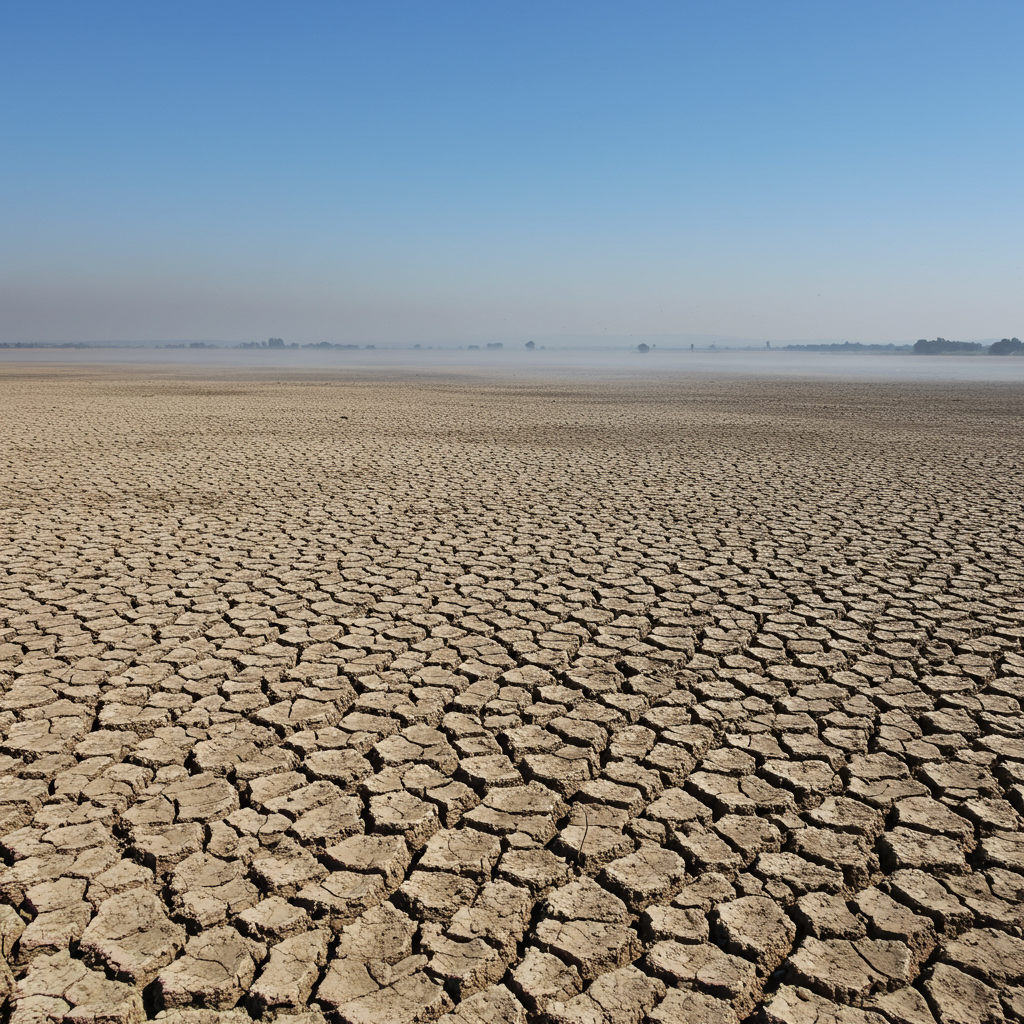Southern Europe is currently experiencing a period of intense, dangerous heat. Across countries like Italy, Spain, Greece, and Portugal, temperatures have soared well above 40 degrees Celsius (104 degrees Fahrenheit). Local authorities are issuing urgent warnings. They highlight the severe risk of wildfires alongside the immediate dangers to public health posed by the extreme heat. This situation underscores the increasing frequency and intensity of such weather events. Experts widely link these developments to the impacts of climate change, signaling a worrying trend for the region.
Battling the Blaze: Wildfire Threats Emerge
The scorching temperatures create tinderbox conditions. This significantly elevates the risk of wildfires across Southern Europe. Greece, in particular, is facing a high wildfire alert. The country is navigating its first major heat wave of the summer.
A large fire erupted south of Athens on Thursday. It forced immediate evacuations near the ancient Temple of Poseidon at Sounion. Strong winds fanned the flames aggressively. This rapid spread damaged homes and sent thick plumes of smoke into the sky. Emergency services deployed extensive resources to contain the blaze. This included 130 firefighters, 12 planes, and 12 helicopters. Authorities evacuated 40 people from five areas under threat. This swift action aimed to protect lives and properties from the fast-moving fire.
Southern European Nations Under Pressure
Heatwaves are gripping multiple nations simultaneously. Italy, Spain, Greece, and Portugal all recorded severe heat before the weekend. Residents and tourists alike sought urgent relief from the stifling conditions. Finding shade, staying hydrated, and avoiding peak heat hours became essential strategies for survival.
Portugal placed two-thirds of its territory on high alert on Sunday. This alert covered risks from both extreme heat and wildfires. Forecasts predicted temperatures could exceed 42 Celsius (107 Fahrenheit) in the capital, Lisbon. This level of heat puts immense strain on infrastructure and public services.
Italy is also enduring significant heat stress. The Health Ministry put 21 out of 27 monitored cities on its highest heat alert level. This critical warning included major tourist hotspots like Rome, Milan, and Naples. The heat directly impacted daily life. Some regions considered banning outdoor work during the hottest periods. Lazio, Tuscany, Calabria, Puglia, and Umbria were among those planning such restrictions. Italian trade unions pushed for these measures to be implemented nationwide. This highlights the serious health risks faced by outdoor workers in these conditions.
In cities like Rome, tourists gathered near landmarks seeking respite. Sites like the Colosseum and Trevi Fountain saw visitors using umbrellas for shade. Public water fountains provided a crucial source for staying hydrated. Similar scenes unfolded in Milan and Naples. Street vendors did brisk business selling cold drinks like lemonade.
Spain is another country grappling with the intense heat. Temperatures in southern and central parts reached highs of 42 Celsius (107 Fahrenheit). The city of Seville, known for its heat, was particularly affected. Regions across the south saw temperatures well above typical seasonal averages. Spain’s national meteorological service, Aemet, reported that June was set to become the hottest June on record. This marks a significant milestone in the country’s climate history.
Health Impacts and Official Guidance
The extreme heat poses considerable health risks. Vulnerable populations are particularly susceptible. This includes the elderly, young children, and those with underlying health conditions. Doctors in Italy reported an increase in heat-related cases. Hospital emergency departments saw roughly a 10% rise in patients presenting symptoms like dehydration and heatstroke. Those living in urban areas, particularly the homeless and cancer patients, were among the most affected. The urban heat island effect, where city buildings trap and amplify heat, exacerbates these risks in densely populated areas. Experts from institutions like the Italian Institute for Environmental Protection and Research note that city temperatures often exceed 37 Celsius (100 Fahrenheit) due to this phenomenon, making humid urban environments especially challenging.
Authorities across the affected regions issued crucial health advice. They strongly recommend avoiding strenuous physical activity. This is especially important during the hottest hours of the day. Staying well-hydrated is also paramount. Drinking plenty of fluids helps the body regulate its temperature effectively. These simple steps can significantly reduce the risk of heat exhaustion or heatstroke. Public health campaigns are vital to ensure this information reaches everyone, including visitors unfamiliar with the local climate challenges.
The Climate Change Connection
Experts are clear about the link between these extreme events and global climate change. The rising frequency and intensity of severe heat waves in Southern Europe are consistent with climate models. They predict such events will become more common and more severe in the future. This isn’t just a temporary weather pattern. It’s part of a broader trend driven by increasing global temperatures.
A study published last year in The Lancet Public Health highlighted the growing danger. It examined the risk of heat-related deaths tied to climate change. The findings were stark. The study predicted that heat-related fatalities could more than quadruple by mid-century. This projection assumes current climate policies remain unchanged. While globally more people currently die from cold than heat, the study emphasized a critical point. Rising temperatures will offset the benefits of milder winters. This will lead to a significant net increase in overall heat-related mortality. The current heat waves serve as a vivid reminder of these long-term risks becoming present-day realities. Addressing climate change is crucial not only for future generations but for current public health and safety.
Frequently Asked Questions
What countries in Southern Europe are most affected by the current severe heat wave?
The severe heat wave is impacting several Southern European nations significantly. Italy, Spain, Greece, and Portugal are experiencing extreme temperatures well over 40°C (104°F). These countries have issued high heat alerts, particularly for major cities and regions known for tourism, due to the intensity of the conditions.
What actions are authorities taking to manage the heat wave and wildfire risks?
Authorities in affected countries are implementing various measures. This includes issuing high heat alerts for cities, warning the public about wildfire risks, and advising against outdoor activity during peak heat hours. Some regions in Italy are planning to ban certain outdoor work activities. Greece and Portugal have deployed significant emergency resources to combat wildfires fueled by the heat and winds.
What are the main health risks during this extreme heat, particularly for vulnerable groups and tourists?
Intense heat poses serious risks like heat exhaustion and heatstroke. Vulnerable populations, including the elderly and children, are especially susceptible. Hospital emergency rooms in Italy reported increased cases of dehydration and heatstroke. Tourists should be aware of these dangers, stay hydrated, seek shade, and avoid strenuous activity during the hottest parts of the day to protect their health.
The severe heat waves across Southern Europe highlight the immediate challenges posed by extreme weather. As these events become more frequent, public health measures, emergency preparedness, and long-term climate strategies become ever more critical. The current situation serves as a potent reminder of the need for resilience and adaptation in a warming world.
Word Count Check: 1006



